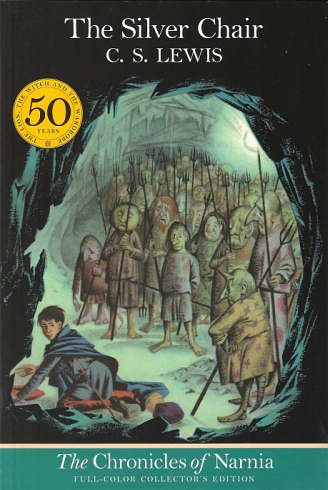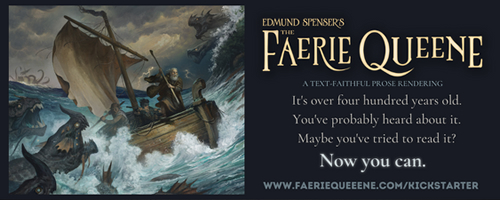The Silver Chair Movie Should Follow These Four Signs

“Remember, remember, remember the book.”
Today I am ducking out of a hiatus from new SpecFaith articles, because on Tuesday big news broke for Christian fantastical fans about The Silver Chair.
At the [Television Critics Association] press tour, producer Mark Gordon let it drop that they’re “hoping to be able to make [The Silver Chair] very shortly. We’re very excited about it.” …
“It’s all going to be a brand new franchise,” Gordon told Collider. “All original. All original characters, different directors, and an entire new team that this is coming from.” Gordon later clarified that the new “original characters” will be from Narnia.
The Silver Chair is C.S. Lewis’s fourth entry in the “Chronicles of Narnia” series.
Film adaptations of the classic fantasy stories have been stalled since 2010, then Walden Media and 20th Century Fox attempted to continue the Walden/Disney franchise with The Chronicles of Narnia: The Voyage of the Dawn Treader. The lackluster1 film quickly sank in the eyes of both critics and audiences.
We shared The Silver Chair news Tuesday night at the at the SpecFaith Facebook page (follow us). A rousing discussion ensued. Some remained uncertain what “original characters” meant. Would this film not feature Eustace Scrubb, returning from Dawn Treader, and his friend Jill Pole? In this case what did “reboot” mean? Could this work?
Here are four signs The Silver Chair can follow to reinvigorate the “Narnia” films.
1. Promote The Silver Chair not as a ‘reboot,’ but a fresh restart
The word “reboot” generally refers to a complete reset of a film series. Reboots of Batman and Spider-Man films did not just recast actors and producers. They also reset the story.
The Silver Chair should not reset any story. It would be a completely new and fresh story, with many characters—Eustace, King Caspian, Aslan—continuing from previous stories. Articles and marketing about the film would best refer not to a “reboot,” but a “restart.”
2. Follow Lewis’s own way of restarting his series with The Silver Chair
The Silver Chair was published in 1953. It’s the fourth volume in Lewis’s series, after a starter “trilogy” consisting of The Lion, the Witch and the Wardrobe; Prince Caspian; and The Voyage of the Dawn Treader. The first three books follow four and then two child heroes, the Pevensies. The books have similar beginnings, images, story structures, and themes.
But The Silver Chair goes in a completely different direction in many ways, such as:
- The first three books are set in Narnia or among Narnians. The Silver Chair leaves Narnia and its customs behind for most of the story.
- The first three books have very “Christian hedonistic” themes.2 But The Silver Chair explores the surrender of delights to perform one’s duty.
- The first three books are like extended fairy tales. The Silver Chair is almost startlingly contemporary in its darker and more brooding approach—more like a dark fairy tale.
- Accordingly, the first three books are filled with greens and golds, crimsons and silvers. The Silver Chair’s palette is dim greens and pale grays, like de-saturated movie visuals.
- The first three books emphasize pursuit of delight in Aslan and his creation. The Silver Chair emphasizes stone-hard, dying-to-self obedience to the Lion.
- The first three books have far happier endings. The Silver Chair’s finale is hopeful yet more heartbreaking. At the center of a very delightful series the story offers a pale, sobering weight, in a manner unique to the Chronicles. Only The Last Battle is similar.
Filmmakers who understand this contrasting approach will find that this is really the “more savage place” version of Narnia that director Andrew Adamson attempted in Prince Caspian (2008). Maturing the story was not a bad idea. But the idea came two films early.
3. Embrace the story’s ‘contemporary’ structure
The Lion … was an easier story to adapt faithfully for the screen. Prince Caspian, not so much. And Dawn Treader’s episodic-yet-unified plot somehow perplexed the filmmakers.
For modern storytellers The Silver Chair is shiny and stable. We have an overt quest: find the lost prince. We have a repeatable formula complete with a perfect hashtaggable slogan: #RememberTheSigns. We have a dark, brooding story set not in an idyllic fantasyland but a ruined wasteland. And we have (to the delight of those who shoehorned The White Witch into both the Caspian and Dawn Treader films) a villain much like The White Witch.
Lewis even throws in hero children who bicker and squabble, more like the “realistic” view of a scriptwriter and less like the relatively better behaved Pevensie children.
This should be easy to adapt faithfully while also satisfying modern expectations of movies.
4. Don’t think bigger, but deeper
As a fantasy franchise restart, The Silver Chair may benefit from lower expectations and a lower budget. There’s less of a chance makers will aim at being “the next Harry Potter” or “the next The Lord of the Rings.” Instead they may try to make a great “little” fantasy film.
The story can go deeper by exploring images and ideas other films have not done.
- Avoid pouring CG onto the screen. Follow newer film trends and emphasize practical effects and on-location shoots. Giants should be real people, enlarged. Many of the gnomes should be real people, in prosthetics. For this much of the budget can already be saved because much of the story is set underground—cave sets are easier builds!
- Avoid Eustace’s and Jill’s bickering for the sake of bickering. Follow the book, in which their squabbling serves a purpose: to show us why they did not follow Aslan’s signs.
- Avoid a great climactic battle.3 Follow the book’s “deeper” finale with imagery that symbolizes the Witch’s defeat, at the hands of heroes who forsake their own dreams of comfort and easy answers and simply choose to obey Aslan.
- Preserve these instructions verbatim from Aslan:
“… Remember, remember, remember the signs. Say them to yourself when you wake in the morning and when you lie down at night, and when you wake in the middle of the night. And whatever strange things may happen to you, let nothing turn your mind from following the signs. … Remember the signs and believe the signs. Nothing else matters.”
- I am being very kind. Back in 2013 I remarked, “Dawn Treader exchanged Lewis’s episodic exploration of wholehearted surrender to adventure and glory, for a videogame-like quest with ‘believe in yourself’ themes. The book emphasizes giving all to see Aslan’s Country (Narnia’s ‘heaven’) even for an instant; the film climaxes with a final sea-serpent battle on an island where nightmares come true, re-envisioned as the source of a green cloud that eats people. After the battle, one character spies Aslan’s Country. ‘Well, we’ve come this far,’ he says flippantly before they hop on by. They have won a trip to Disney World, yet they treat it like a stop at McDonald’s.” ↩
- Aslan vanquishes the winter of a witch who condemns “self-indulgence,” replacing her stone-cold land and restoring the merry place he created. Non-magical Telmarines are defeated by an uprising of magical creatures. Dawn Treader voyages to dazzling and sensual islands. ↩
- Yet I would not argue if the makers added skirmishes with Earth-men before they are set free en masse. ↩










































Honestly, with the exception of LWW, 2-hr movies are just the wrong format to try to tell Narnia visually. Prince Caspian was struggling for content to fill out 2 hours, while Dawn Treader had to bork it up to fit its into 2 continuous hours. I think Silver Chair will be another one struggling to fill 2 hours, even if they try to pad it out with atmospheric wasteland/cavern panning shots (which at least have artistic merit when done right, but it’s a harder sell to a wider audience).
What I would do, given creative control, would be to get an animation house with an artsy reputation (possibly kidnapping the Pope for ransom for the funding needed) and do something more like a mini-series or an anthology and tell it properly without having to cram/stretch it into expected time slots. No big screen release, just disc/download sales (SERIOUSLY, why isn’t selling movies by download a thing yet?) and it should do pretty well.
I hope those in charge follow your advice. Thanks!